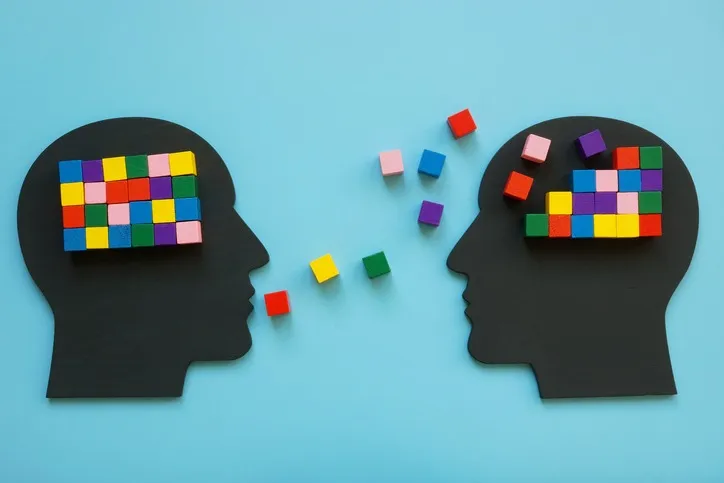What is Two-Way Communication? Definition, Examples, & Best Practices

If you’ve ever felt that your ideas are not quite hitting home, your projects are not heading in the direction that you’d like, or your colleagues and co-workers are struggling to engage with your grand plans, then maybe it’s time to think about how you are communicating your vision. After all, communication is the lifeblood of collaboration, and ensuring that you and your company are effectively conveying your message is crucial to your success.
However, simply telling people what you want or need rarely gets results, and relying solely on one-way communication is likely to make everyone feel isolated and disconnected. The answer? Two-way communication, is a strategy that fosters greater engagement, out-of-the-box thinking, and that gets the very best out of your talented team!
But what exactly is two-way communication and how does it work? This article will explain the different types of two-way communication, its benefits, and how to build a culture that promotes creative collaboration by ensuring everyone is involved. Read on to learn more, and of course, feel free to chime in with your thoughts!
What is Two-Way Communication?
Two-way communication is the process of sharing information between the sender and the receiver. It allows for reciprocal dialogue, feedback, and the exchange of ideas. Examples of two-way communication include:
-
•
Face-to-face meetings where collaborative discussions allow participants to openly contribute.
-
•
Feedback sessions that allow employees to provide constructive input on projects, processes, or organizational strategies.
-
•
Open forums that provide platforms for employees to voice concerns, share suggestions, or propose ideas.
 Heads with colorful cubes as a symbol of mentoring and psychotherapy.
Heads with colorful cubes as a symbol of mentoring and psychotherapy.
However, two-way communication is not limited to the above examples, and there are many other ways to boost reciprocal dialogue and foster the exchange of ideas. In addition, various types of two-way communication can be integrated into your daily operations, giving you a variety of ways to boost interaction across your entire hierarchy. They include:
-
Horizontal Two-Way Communication — Interaction between colleagues at the same hierarchical level, fostering teamwork and cooperation.
-
Vertical Two-Way Communication — Exchange between employees and management, promoting transparency and understanding.
-
Asynchronous Two-Way Communication — Non-real-time communication through channels like emails and project documentation.
-
Instantaneous Two-Way Communication — Real-time exchanges facilitated by tools such as chat applications, enabling quick decision-making.
What Are the Benefits of Two-Way Communication?
For anyone looking to build better working relationships, two-way communication offers numerous benefits that can help push your teams to the next level. They include:
-
•
Improved Employee Satisfaction & Engagement — Involving employees in decision-making enhances morale and fosters a sense of ownership, helping you build better teams from the ground up.
-
•
A Sense of Trust and Loyalty — Open communication builds trust between employees and management, strengthening the foundation of a positive workplace culture and ensuring that everyone is on board with your vision.
-
•
Increased Productivity — Clear and constant communication ensures that everyone is aligned with your goals, reducing misunderstandings and boosting productivity across your entire structure.
-
•
Streamlined Collaboration and Alignment — Two-way communication aligns team members with organizational objectives, fostering collaboration, and encouraging innovation.
 Hand choosing green happy smiley face paper cut, product, user, service feedback rating and customer reveiw, experience, satisfaction survey, psychology mental health test concept
Hand choosing green happy smiley face paper cut, product, user, service feedback rating and customer reveiw, experience, satisfaction survey, psychology mental health test concept
How to Create a Culture of Two-Way Communication in the Workplace
Mastering the art of two-way communication can be challenging, particularly if your business has time-tested communication methods that seem to work. However, by making that extra effort to boost two-way comms, you can open up new space for collaboration, build trust, and work towards shared success.
Explore these ideas for fostering a culture of two-way communication in your business and you can
-
•
Get the right tools — Ensuring you have the right communication tools in place can boost two-way communication and provide your teams with a centralized space for daily operations. Spike provides real-time communication, simple collaboration tools, and project management features to enable streamlined chat and teamwork.
-
•
Encourage managers to receive upward feedback — Welcoming feedback from employees and creating a culture of openness can enable managers to critically assess their performance and deliver greater support for teams.
-
•
Give employees a voice — By regularly using feedback forms, surveys, or suggestion boxes to gather input, you can get valuable insights into your employee’s perspectives and generate new ideas.
-
•
Recognize employee contributions — Acknowledging and rewarding employees for their ideas, efforts, and achievements can boost morale and motivation. In turn, this allows for easier two-way communication based on open dialogue.
-
•
Establish company-wide communication standards — Defining and promoting guidelines for respectful and effective communication across your entire hierarchy enables consistency and clarity for two-way communication. In addition, this can promote transparency and reduce the likelihood of misunderstandings or conflicts.
Wrapping Up
Effectively conveying your message to colleagues, co-workers, and even clients is important within any successful business, and by ensuring that you are leveraging two-way communication you can effectively level up teamwork and collaboration. In fact, by embracing open dialogue, your business can enhance employee satisfaction, build trust, and ultimately drive success across your entire hierarchy.
For more information on how Spike can help you boost two-way communication in your business, download the app today.
Gain Communication Clarity with Spike
You may also like
20 Email Address Ideas for a Unique & Professional Username
Looking for some creative ideas for your professional email domain? Here are some of our favorite examples and tips. Read on to learn more.
Read More10 Actionable Small Business Ideas to Kickstart New Income
Looking to start a side hustle or want to transform a passion into a full-time gig? Check out our guide to the most successful small business ideas for 2023.
Read MoreMastering Email Triage for Busy Professionals
Just like a battlefield medic, email triage helps you quickly identify the critical messages that need your immediate attention, while efficiently sorting the rest for later or delegating them altogether.
Read More



